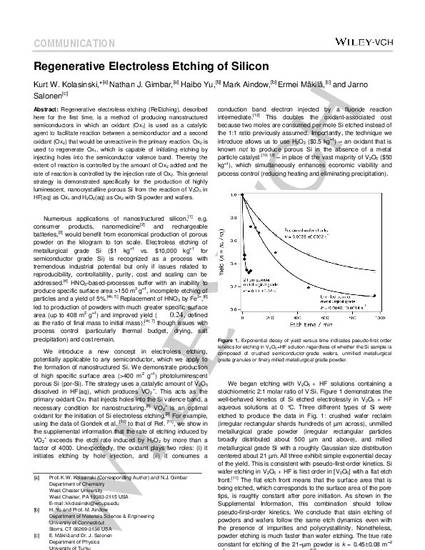
Regenerative electroless etching (ReEtching), described herein for the first time, is a method of producing nanostructured semiconductors in which an oxidant (Ox1) is used as a catalytic agent to facilitate the reaction between a semiconductor and a second oxidant (Ox2) that would be unreactive in the primary reaction. Ox2 is used to regenerate Ox1, which is capable of initiating etching by injecting holes into the semiconductor valence band. Therefore, the extent of reaction is controlled by the amount of Ox2 added, and the rate of reaction is controlled by the injection rate of Ox2. This general strategy is demonstrated specifically for the production of highly luminescent, nanocrystalline porous Si from the reaction of V2O5 in HF(aq) as Ox1 and H2O2(aq) as Ox2 with Si powder and wafers.
Available at: http://works.bepress.com/kurt_kolasinski/24/

Final post-refereed draft is available from Digital Commons @ WCU after one year embargo.